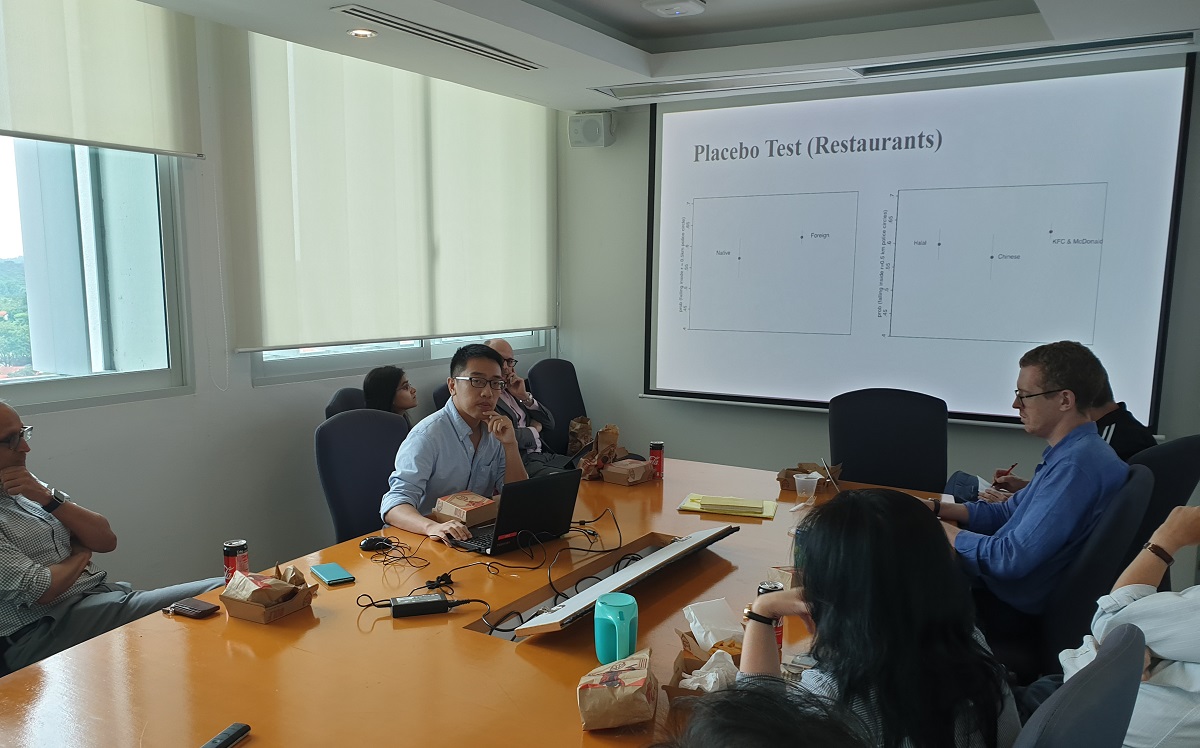
On November 14, 2019, Assistant Professor Adam Liu presented on the topic of The Spatial Organization of Coercive Institutions in Autocracy: Evidence from China. There is a large body of political science literature on how authoritarian regimes rule, and how these instruments of rule, such as party and legislature, are similar to those of democracies in form but different in substance. However, the problem is that, these studies focused too much on democratic-looking institutions in these authoritarian regimes, but they ignored the institutions that make these regimes authoritarian in the first place. Therefore, Dr. Liu wants to put the study of coercive institutions in authoritarian regimes front and center. He asks: how do authoritarian regimes organize coercive institutions on the ground?
The argument is that, as rational actors, autocracies should efficiently organize their limited coercive institutions by clustering them with perceived threats in societies. By “perceived threats”, it is defined as segments of the population that are most ideologically distant from the ruling elites and the parts of the population that have some degree of mobilizing power that can resist the state. The significance of this study is that, modern states control people by controlling the space where people live and work, and coercive capacity is more important than economic performance for regime resilience. To test the spatial clustering theory, Dr. Liu seeks to study the relation between policing and religion in China. In most parts of China, there is no distinct racial or ethnic demarcations, but one clear distinction is religion, and the CCP has been paying close attention to the religious allegiance of the Chinese people, and the Party uses this as a way to identify potential threats.
It is pointed out that the Chinese government has always been concerned with potential foreign infiltration through religion, especially through Christianity, since the Church has the ability to mobilize the masses to go against the state. Dr. Liu’s hypothesis is that, churches are more likely to be found in the vicinities of police stations than sites of other religions. He also argues that the study is unable to solve the “chicken and egg” problem of whether the police station or the church is built first, and one of the reason is that, it is the same government that permits the construction of church and the police.
Using data extracted from Gaode Map as well as an economic census data that surveyed each religious site in China in 2004, Dr. Liu looked at the 500m, 1km and 2 km radius of each police station in China, and examined what kinds of religious sites are more likely to fall in these radius circles. The finding is that, Protestant and Catholic churches are twice as likely to fall inside the 500m radii of police stations as Buddhist or Daoist temples. Between Protestant and Catholic churches, the Catholic churches is more likely to fall inside the 500m radius across most Han-dominated provinces. Nonetheless, Dr. Liu also controls for elevation of the religious sites into account, since many Buddhist and Daoist temples are located at high altitude, remote areas with few or no police stations. Urban and rural areas are also studied separately, and it is found out that there are only slight discrepancies in the pattern between the two different kinds of settlements.
During the Q&A, it was pointed out that police station is not the only institution that could control churches. If the CCP is interested in incorporating the churches, then perhaps the existence of CCP party branches in the vicinities of the churches could be studied. It was also further clarified that the close proximities of police station near churches serve as means of deterrence and rapid reaction against possible “mass incidents” that could be instigated by churches, as well as for the purpose of effective surveillance of church gatherings. As for the data bias on Buddhist and Daoist temples, which may be located at remote, mountainous areas with little police presence, it was also pointed out that many newer Buddhist and Daoist temples are now built in urban centers. Hence a fair comparison between the locations of Buddhist or Daoist temples vis-à-vis that of Christian churches in the vicinities of police stations can be established.
One suggestion from the audience is that, it would be a lot more interesting if Dr. Liu could prove that the churches are made by the government to be built around police stations instead of the other way round, and that would be a good case of spatial control. It was also pointed out that the reason why the CCP sees Christianity as a potential threat is because to the Chinese government, Christianity has not been Sinicized enough, unlike other religions in China. On top of that, the Chinese government is also concerned of the Pope of the Catholic Church, as he poses as an “alternative government leader” apart from the Chinese authority. It is important to decide whether the study wants to focus on the aspect of spatial control or coercion.